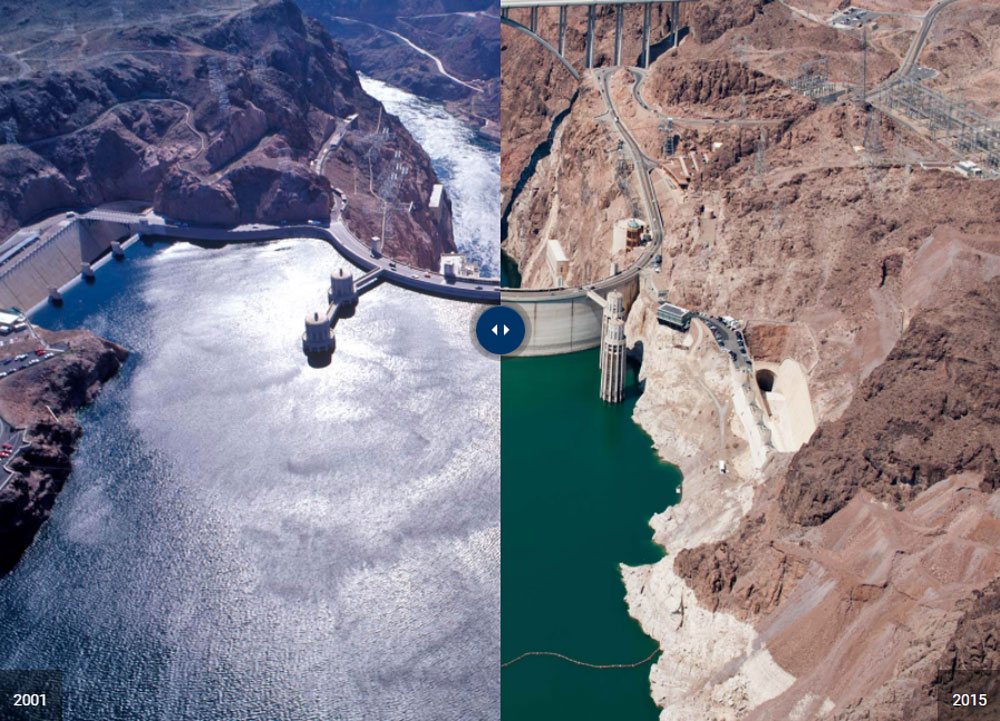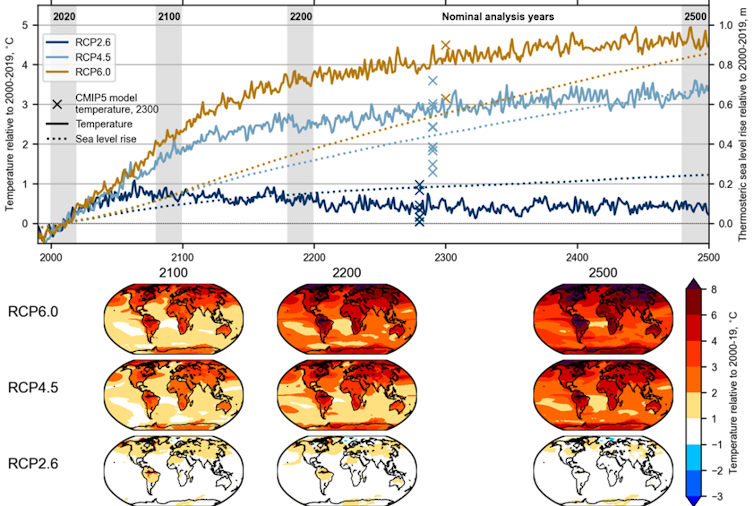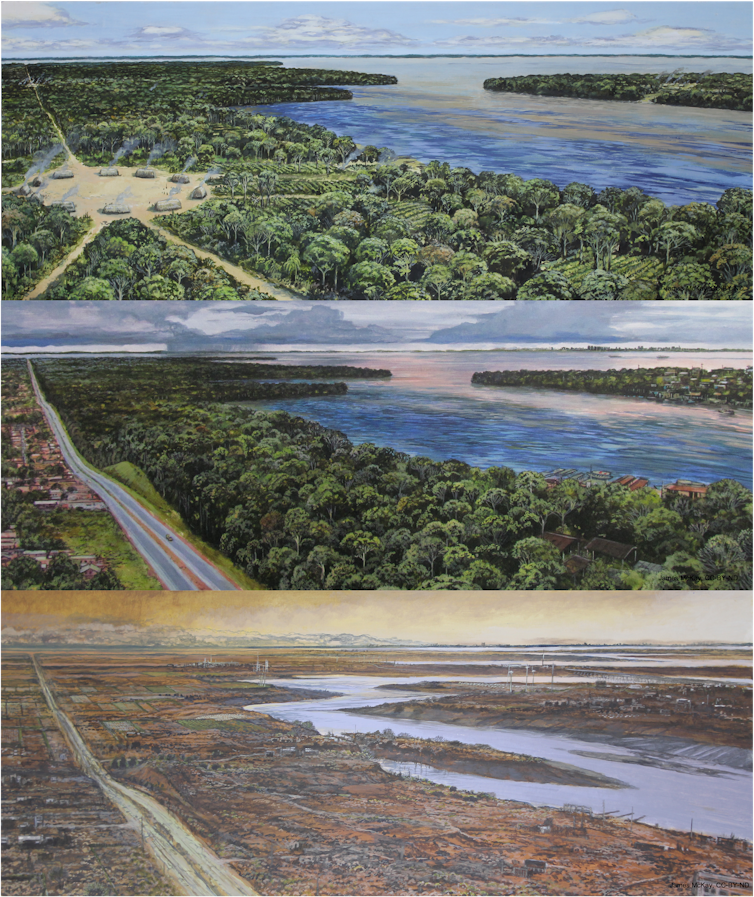
By Christopher Lyon et. al.
There are many reports based on scientific research that talk about the long-term impacts of climate change — such as rising levels of greenhouse gases, temperatures and sea levels — by the year 2100. The Paris Agreement, for example, requires us to limit warming to under 2.0 degrees Celsius above pre-industrial levels by the end of the century.
Every few years since 1990, we have evaluated our progress through the Intergovernmental Panel on Climate Change’s (IPCC) scientific assessment reports and related special reports. IPCC reports assess existing research to show us where we are and what we need to do before 2100 to meet our goals, and what could happen if we don’t.
The recently published United Nations assessment of Nationally Determined Contributions (NDCs) warns that current promises from governments set us up for a very dangerous 2.7 degrees Celsius warming by 2100: this means unprecedented fires, storms, droughts, floods and heat, and profound land and aquatic ecosystem change.
While some climate projections do look past 2100, these longer-term projections aren’t being factored into mainstream climate adaptation and environmental decision-making today. This is surprising because people born now will only be in their 70s by 2100. What will the world look like for their children and grandchildren?
To grasp, plan for and communicate the full spatial and temporal scope of climate impacts under any scenario, even those meeting the Paris Agreement, researchers and policymakers must look well beyond the 2100 horizon.
After 2100
In 2100, will the climate stop warming? If not, what does this mean for humans now and in the future? In our recent open-access article in Global Change Biology, we begin to answer these questions.
We ran global climate model projections based on Representative Concentration Pathways (RCP), which are “time-dependent projections of atmospheric greenhouse gas (GHG) concentrations.” Our projections modelled low (RCP6.0), medium (RCP4.5) and high mitigation scenarios (RCP2.6, which corresponds to the “well-below 2 degrees Celsius” Paris Agreement goal) up to the year 2500.
We also modelled vegetation distribution, heat stress and growing conditions for our current major crop plants, to get a sense of the kind of environmental challenges today’s children and their descendants might have to adapt to from the 22nd century onward.

(Lyon et al., 2021)
In our model, we found that global average temperatures keep increasing beyond 2100 under RCP4.5 and 6.0. Under those scenarios, vegetation and the best crop-growing areas move towards the poles, and the area suitable for some crops is reduced. Places with long histories of cultural and ecosystem richness, like the Amazon Basin, may become barren.
Further, we found heat stress may reach fatal levels for humans in tropical regions which are currently highly populated. Such areas might become uninhabitable. Even under high-mitigation scenarios, we found that sea level keeps rising due to expanding and mixing water in warming oceans.
Although our findings are based on one climate model, they fall within the range of projections from others, and help to reveal the potential magnitude of climate upheaval on longer time scales.
To really portray what a low-mitigation/high-heat world could look like compared to what we’ve experienced until now, we used our projections and diverse research expertise to inform a series of nine paintings covering a thousand years (1500, 2020, and 2500 CE) in three major regional landscapes (the Amazon, the Midwest United States and the Indian subcontinent). The images for the year 2500 centre on the RCP6.0 projections, and include slightly advanced but recognizable versions of today’s technologies.
The Amazon

(Lyon et al., 2021), CC BY-ND
Midwest U.S.

(Lyon et al., 2021), CC BY-ND
The Indian subcontinent

(Lyon et al., 2021), CC BY-ND
An alien future?
Between 1500 and today, we have witnessed colonization and the Industrial Revolution, the birth of modern states, identities and institutions, the mass combustion of fossil fuels and the associated rise in global temperatures. If we fail to halt climate warming, the next 500 years and beyond will change the Earth in ways that challenge our ability to maintain many essentials for survival — particularly in the historically and geographically rooted cultures that give us meaning and identity.
The Earth of our high-end projections is alien to humans. The choice we face is to urgently reduce emissions, while continuing to adapt to the warming we cannot escape as a result of emissions up to now, or begin to consider life on an Earth very different to this one.![]()
![]()
The authors:
Christopher Lyon, Postdoctoral researcher, Natural Resource Sciences, McGill University; Alex Dunhill, Research Fellow in Palaeobiology, University of Leeds; Andrew P. Beckerman, Professor in Evolutionary Ecology, University of Sheffield; Ariane Burke, Professor, Anthropology, Université de Montréal; Bethany Allen, PhD Student, School of Earth and Environment, University of Leeds; Chris Smith, NERC-IIASA Collaborative Research Fellow, University of Leeds; Daniel J. Hill, Lecturer, School of Earth and Environment, University of Leeds; Erin Saupe, Associate Professor, Palaeobiology, University of Oxford; James McKay, Manager, Centre for Doctoral Training, University of Leeds; Julien Riel-Salvatore, Professor, Anthropology, Université de Montréal; Lindsay C. Stringer, Professor, Environment and Geography, University of York; Rob Marchant, Professor of Tropical Ecology, University of York, and Tracy Aze, Associate Professor, Earth and Environment, University of Leeds
![]()
![]()





























Veteran says
China and India emit more greenhouse gas than the rest of the world combined and are increasing so it doesn’t matter what we do, besides who cares about the year 2500! Do you really care about your great, great, great, great, great etc. grandchildren? You’ll be dead for 450 years.
The dude says
Yeah… I care. I care about my children, and any children they may have, and so on.
Mike Cocchiola says
Way to go Veteran. Damn the earth and all who live after us. Who needs to nurture and preserve anything if we’re all going to die.
But then, I will have a great, great, great, great, great, etc. granddaughter or grandson and I’d like to leave them some memory of me like rivers, oceans, trees, animals, and other humans to keep them company.
Jimbo99 says
Lake Mead’s water level loss appears to be a sea level rise for the oceans & intracoastals. Water is fluid, it flows, just because they measure one container at Lake Mead doesn’t mean the planet isn’t still 75% covered by water ? Man can capture water with dams. levees & dikes, but they really can’t hold back oceans & seas that way. And what is overpopulation doing to the planet ? Every living being has a minimum fresh water requirement. The more illegals in this nation and the water supply is strained to capacity. Some of the nations where the illegals are fleeing, those cities are overrun with human beings. and the first place the illegals go in the USA are the larger cities to strain that infrastructure to fail or just be more polluted & lower quality.
One who Knows says
By 2050 most of Coastal Florida will be UNDER WATER. By 2100 Florida would have SUNK under the ocean. Extra-terrestrial interference is happen at a VERY FAST rate now. Disclosure by Government will happen in less then 5 years. All nuclear war heads have been disabled and are not reliable for defense anymore. Military has covered up this information as to not panic our society. Since we can’t control the destruction of this planet, other civilizations have come to help us. Hopefully the NEW ENERGY discovery that produces NO harmful bi-products will be put into use after the “Disclosure” becomes known.
MikeM says
No worries. Keep your tinfoil hat on and you will be protected.
Pogo says
@FlaglerLive
With everything italicized, and the inanity of the comments, I thought I might have stumbled onto The Onion.
Sadly, no. Oh well.
FlaglerLive says
The universal italics were an error on our part, not (yet) a result of global warming.